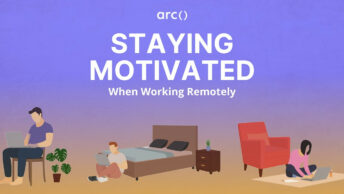In a modern work environment, the chances are that not everyone on your team will have the same cultural background. However, even before the COVID-19 pandemic, plenty of large software development companies functioned through a network of globe-spanning teams — with employees that collaborated successfully regardless of their geographical locations and cultural differences.
Today, the entire business landscape is transitioning to remote or hybrid workspaces — and developers working for the same company are now more diverse than ever.
While there’s no question about diversity being a positive thing, cross-cultural communication does come with some unique hurdles. Indeed, managing remote teams (or even just being a part of one) requires regular conversations with people who have different cultural norms and perspectives.
Considering this — how do you avoid confusion and achieve a desirable level of cross-cultural understanding? We’ll explore that question here and give you some useful tips on communicating with different cultures in the workplace more efficiently.
Looking to hire the best remote developers? Explore HireAI to see how you can:
⚡️ Get instant candidate matches without searching
⚡️ Identify top applicants from our network of 300,000+ devs with no manual screening
⚡️ Hire 4x faster with vetted candidates (qualified and interview-ready)
Try HireAI and hire top developers now →
What Does Cross-Cultural Communication Bring to the Table?
While practicing cross-cultural communication skills interaction in the workplace does have its challenges — like working across different time zones — there are also plenty of benefits you can reap from a culturally diverse team.
For starters, these teams are less prone to homogenous thought and tunnel vision because employees from different cultures can often offer differing perspectives on the same issue, making more informed decisions and exploring more options before arriving at the best possible solution. A more diverse workforce is better equipped to tackle any bug or design issue.
Most computer science college courses won’t focus on this — but in practice, software development is more about efficient collaboration than individuals displaying any “scientific” knowledge. In corporate IT, there are no solo fliers and teams of one — if you can’t be productive with other people, you won’t get far in software development. These days, pretty much everything except the most trivial software is just too complex and too big for one person to maintain alone — global teamwork is essential.
This is evident from a financial perspective as well — this McKinsey study shows that companies with more ethnically and culturally diverse teams are 33% more likely to reach above-average profits. And while businesses stand to earn a lot from culturally diverse employees — the individuals themselves won’t be unrewarded either.
There’s a lot of valuable personal experience they can earn from intercultural communication. For instance, a culturally diverse team has a broader insight into UX design for a global audience. Also, working in cross-cultural teams helps developers become more adaptive, making them more competitive in the worldwide job market.
On the other hand, cross-cultural teams also come with their own unique challenges. For instance, team members from different cultures might be used to starting meetings differently — some like to get straight to business, while others think it’s customary to chat and socialize first.
There are also different ideas about punctuality — different degrees of “lateness” are appropriate for different cultures. And the same is true for other aspects of communication, like whether it’s normal to publicly disagree with a team member or voice concerns in one-on-one conversations. Generally, the public vs. individual approaches to feedback can vary wildly across cultures.
Considering all of this, learning to communicate with people from different backgrounds is an essential skill — in the workplace and beyond. It ties in handily with interpersonal skills. And working in a cross-cultural team helps people excel in precisely that skill while also opening them up to various perspectives and opinions that will shape their viewpoints going forward.
Read More: How to Collaborate Effectively as a Remote Developer
The Right Mindset for Cross-Cultural Communication
All of us have some preconceived notions about different cultures — and the stereotypes tend to be more general if the culture is more distant from ours. However, for remote development teams to function, we must move past these preconceived ideas and become more open to cross-cultural relations based on mutual understanding and respect.
There’s no single “catch-all” recipe for this, as every cross-cultural melting pot is different. However, here are some things to keep in mind as you conduct yourself in a cross-cultural remote workplace.
There’s no “right” answer
The first trap people fall into — even those honestly invested in cross-cultural communication — is assuming that one culture is doing something right while the others are wrong. Even when we put time and energy into learning about different cultural perspectives, we still often have the subconscious assumption that our culture is right about something, while the others should simply adjust.
In reality, there’s no right or wrong answer to cultural differences — nor is there a single benchmark that all cultures can be compared against. At the end of the day, people are just different and need to find a middle ground — there’s no incorrect or inferior culture.
People don’t represent their entire culture
After working in a cross-cultural space for a while, plenty of developers gain valuable experiences with other cultures. However, that opens up an entirely different can of worms — for instance, assuming that individuals and their personalities represent their entire culture.
In other words — just because a team member from Sweden preferred straightforward and direct communication doesn’t automatically mean that every Swedish person likes that kind of discourse in all circumstances. Just think about how different you can be from a colleague from your hometown — let alone from other members of your own culture.
And it goes both ways — once you learn the shared preferences of one cultural group, it can be tempting to assign these to every single member of that group. Unfortunately, communication across cultures is more complicated in reality.
Yes, there are some rules and cultural norms that people with the same backgrounds share, but you should learn to differentiate these from personal preferences, tastes, and personality traits we all have. In many cases, these can go against the standards of the person’s culture.
And while you’re getting to know your colleagues, it’s great that you’ve taken the time to become familiar with their cultural backgrounds. You just need to do the same with individuals’ personal preferences and personalities.
Business is not conducted the same everywhere
Today, the business world is more uniform and globalized than ever, and there’s no question about that. However, it’s easy to assume that people conduct business the same regardless of their cultural backgrounds — but that’s just not true.
In reality, many small differences depend on people’s cultural backgrounds — and assuming that people conduct themselves the same in business environments is another ethnocentric viewpoint. You see the business conduct of your culture as so natural and intuitive that it’s easy to assume it comes as quickly to others as well.
And sure, software developers tend to focus on formality less than employees in other industries and businesses — but it’s still important to mind potential lapses in communication.
Read More: How to Keep Learning on a Busy Developer Schedule
Arc is a radically different remote job search platform where companies apply to you. We feature developers directly to tech companies and startups and help you land a remote job in 14 days.
Sign up here.
How to Approach Cross-Cultural Communication
Now that you’re in the proper mindset for cross-cultural communication, we’re going to share some practical tips on communicating in diverse teams more effectively.
Become more aware
The first step to more effective communication across cultures is awareness. You need to be aware of the communication style of your team members from different cultural backgrounds and their different habits. Stop assuming that everyone will communicate the same.
As we’ve mentioned before, there are two different aspects here — researching different cultural norms and becoming more familiar with people’s individual preferences in the context of those norms.
And when you start working with new colleagues from different cultures that you aren’t familiar with, the quickest way to a common language is an honest conversation. Don’t hesitate to ask them polite, but direct questions like:
- What are your communication-related pet peeves?
- Do you prefer messaging or in-person communication?
- What is your preferred format for receiving feedback?
Especially if you’re new at intercultural communication, this can seem a bit forward — but if you ask this kind of stuff in a low-pressure, friendly way, you and your colleagues will quickly get on the same page, resulting in a mutually beneficial and more productive working relationship.
Read More: 15+ Powerful Tips for How to Work From Home Successfully
Put in the work
If you don’t have a culture coach at your company, you will likely need to do some research into your colleagues’ cultural norms to communicate with them more effectively. Of course, these days, that amounts to a simple Google search; but you could probably gain more valuable insights if you expressed your interest to your colleague directly.
More likely than not, they’ll be happy to share details about their culture. And that will get you all the info you need, with the added benefit of bringing you closer together for more friendly workplace relations moving forward.
Steer clear of jargon and slang
Slang and jargon can be misinterpreted even when talking to someone from the same cultural background, let alone someone you’re working with who’s from the other side of the world. That’s why you should avoid idioms, slang, and jargon that can easily be misunderstood — focus on clear, direct communication.
Jargon rarely translates well across cultures because it’s so heavily dictated by specific cultural norms. Instead, make your communication explicit and to the point — and you shouldn’t have any problems to solve getting your message across.
Read More: Learn Remote Work Jargon and Terminology in Our Glossary
Learn their language
Of course, no one has the time to become fluent in all the foreign languages of their coworkers. However, demonstrating a basic level of investment and engagement with their culture through language is always a great way to bring people closer together.
Just putting in the small amount of work needed to learn a friendly greeting or a simple “thank you” will go a long way towards showing your supportive, understanding, and open-minded nature.
Talk more slowly
This doesn’t mean you should slow down to a crawl — but talking just a bit more slowly will give everyone involved in the conversation time to process things. Plus, the rate of speech is another communication factor heavily influenced by our cultural norms. While Mandarin is a slow and deliberate language, Spanish is widely known as rapid and fast-paced.
On the other hand, it’s also important not to adopt a sluggish pace that would make you seem condescending to others, especially when talking in your native language.
Confirm what you’ve discussed
When you’re communicating with people from different cultures, adopting this as a habit is extremely useful. Once you’ve done with a verbal or written exchange, take a few moments to confirm and recap what you’ve just discussed, just to be sure you’ve understood everything correctly.
This is as simple as finishing with a “To summarize, you’re going to ____, and I’m going to ____ by Monday.” Such an extra step may seem unnecessary, but it will come in handy and help you avoid a lot of frustration, headaches, and hassles down the road.
Read More: How to Optimize a Software Developer LinkedIn Profile
Better Cross-Cultural Communication Doesn’t Happen Overnight
Cross-cultural communication in the workplace has a longer history than most people realize; we’ve communicated and worked with people from different backgrounds even before the Internet.
However, the number of global development teams brought into existence by advanced technology is much higher today. What was once an incidental novelty is now a fact of business life — especially in the world of software development, where more people are working remotely than in any other field. The employees of today’s dispersed work culture constantly face challenges related to successful cross-cultural communication.
Even with the best intentions, it’s important to realize one thing. At the end of the day, better cross-cultural communication won’t happen instantly, regardless of how many articles and studies on it you consume.
Just like any other competency or skill, it takes time, energy, and hard work to get better at it. And it’s a process of constant learning — but one that bears plenty of rewards, both in the professional and human sense.










